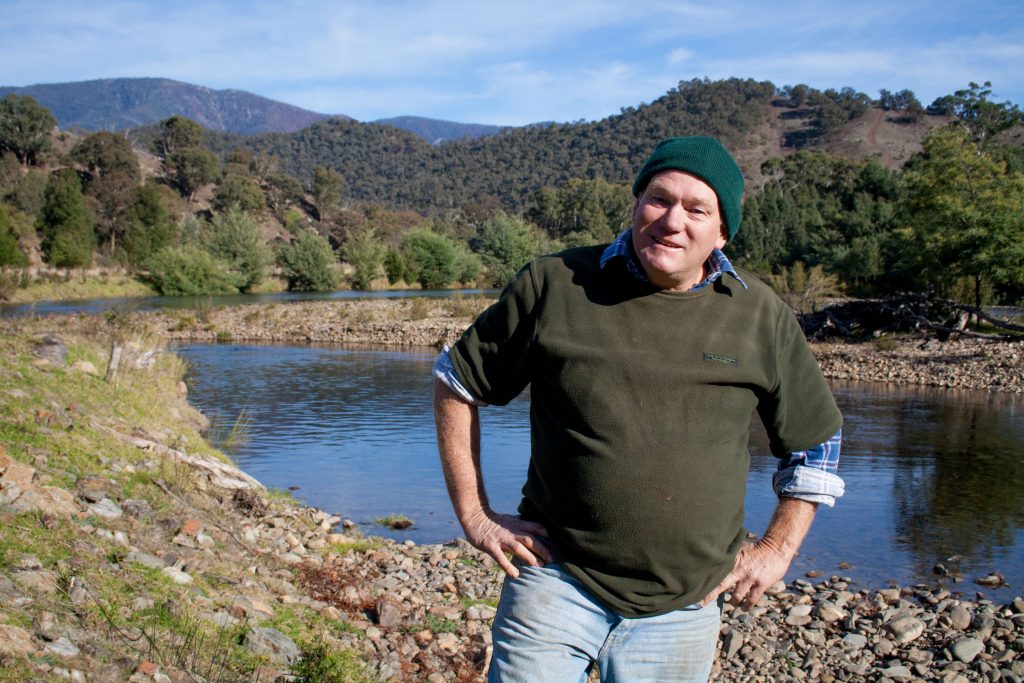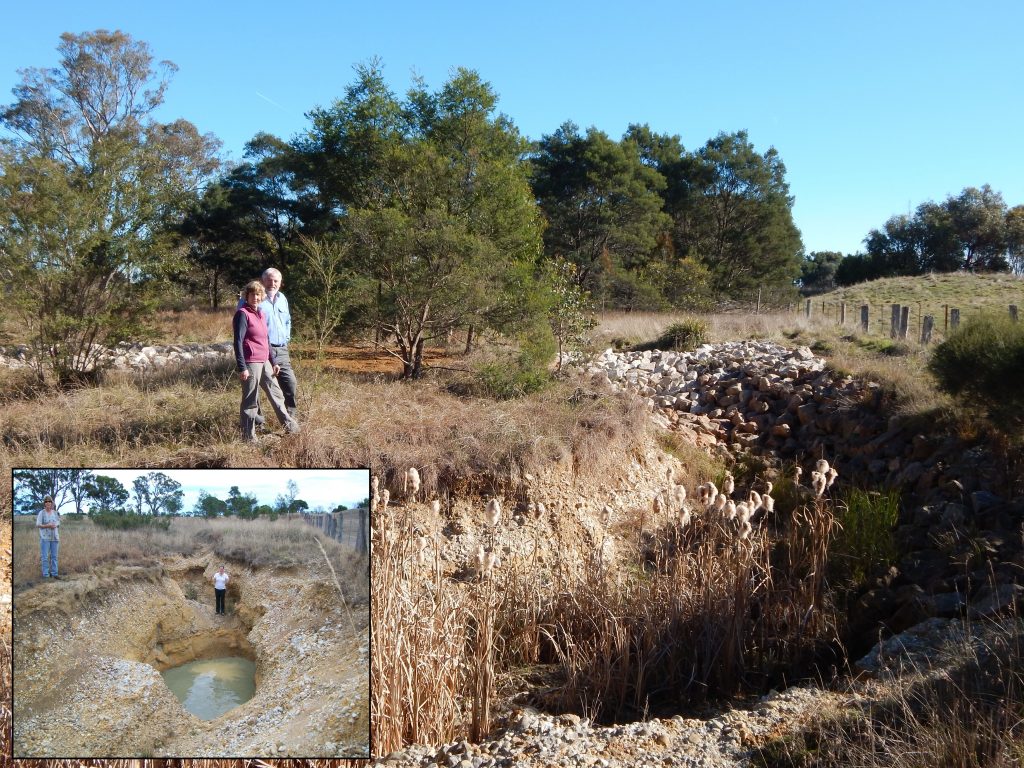
Murray Gibbs is more familiar than most with the changing face of the Wonnangatta River. A fifth generation farmer he’s seen first hand what nature can do, especially to the 10 km of river frontage that runs through his property. “When a flood comes down it just rushes on through” says Murray.
“The Pinnacles reach 5,000ft and there’s not much between them and me so it’s a fairly big roof. It’s got a large gable on it so the water rushes down and then it’s gone in 24 hours.” Gone but not forgotten leaving a path of debris along the riverfront paddocks.
“The 2007 flood was a particularly big one but the river flats have always been a changing thing and they always will be when you get those big ones.”
Murray has spent the last decade working alongside the East Gippsland Catchment Management Authority (EGCMA) to help reduce flood damage to his properties. By using rock to stabilise the river bank and replanting several hundred metres of his frontage, the river bank has become more resilient to the forces of nature. Fencing ensures that his cattle are off the river allowing the plants to take hold and grow and help to manage his stock.
“It makes the farm management quite easy, the rocking has had a good effect and the tree’s are taking well so I think this is working.” he says.

Hidden among the farming properties of Forge Creek is a patch of ground that has come to resemble a chessboard with alternating squares of pasture all of various lengths and condition.
The site is a demonstration plot run by Southern Farming Systems (SFS) for the benefit of the National Landcare Programme’s Topsoils initiative, funded by the Federal Government and administered by the East Gippsland Catchment Management Authority (“the EGCMA”).
The chess player is SFS Gippsland Coordinator Janice Dowe who has spent the last two years trialling the addition of various soil treatments to test for productivity increases.
“We’ve taken the results of the Topsoils soils testing programme and we’re looking at improving nutrient levels.” explains Janice.
Ten treatments, including super, limes, copper and zinc amongst them, are applied in a variety of combinations over an 80m x 100m allotment in a grid like pattern. “With everything here on the one site, different fertilisers in the same situation, your comparing everything on the one plot to see what’s working” says Janice.
The trial site has been designed to compliment the trials being undertaken by the Topsoils farmer led focus groups. Where many members are low input operators, this site includes higher inputs and demonstrates the effects of multiple options.
“Southern Farming Systems is different from landcare Groups” says Janice, “which creates a good level of diversity for the farming community.”
While Janice acknowledges that not everything is going to work she suggests that that’s the beauty of small plot trials. “A farmer can come along and say I grow that one and it’s in a similar area, they can see which one does better and think maybe I’ll try that one next year.”
“We’re giving farmers the understanding and opportunity to push their options further with scientific rigour, it’s a chance to try before they buy.”
For more information about the Topsoils Programme contact the East Gippsland Landcare Network.

Many hours of work over the past 15 years has gone into improving Forge Creek reserve, an ecologically significant creek system of East Gippsland that links to the Gippsland Lakes.
The Forge Creek reserve is about 7kms south of Bairnsdale and includes 10km of creek line and over 70 ha of land. The reserve contains woodlands and forests around a chain of fresh water ponds that eventually flow into the Gippsland Lakes at Newlands Arm.
Romawi Landcare and Cobblers Creek Landcare groups, together with other volunteer organisations and government agencies, have joined forces to create a healthy environment for native fish, birds and animals along this important waterway. Improving Forge Creek also helps reduce nutrients entering the Gippsland Lakes.
Graeme Dear, CEO EGCMA said “Loving our Lakes is about a shared responsibility to participate in caring for the Lakes and catchment.”
The project has received funding from multiple sources over these years with recent examples being Gippsland Lakes and Landcare funds from the Victorian government.
Stock is now excluded from the reserve and many adjoining landholders have contributed by fencing off additional land to protect significant trees and sites abutting the reserve.
Controlling weeds has been a huge component of the project and will continue to be a part of the ongoing maintenance undertaken by DEWLP, Romawi Landcare and other involved agencies.
A major erosion problem was addressed by the EGCMA. “Rocks and vegetation have been placed in critical sites to control erosion, protect vunerable ponds and help with the flow of water in times of heavy rains,” said Graeme.
With flourishing undergrowth and improved water quality many species including Pygmy Perch; a small native fish, have returned to the area. A rare species of water-lily was planted on the banks of the ponds and is now self-seeding.
Michelle Judd, a member of Romawi Landcare said “The Romawi Landcare group has enjoyed the continued cooperation of landholders, other volunteer groups and agencies.”
Romawi Landcare would like to see the area used as an educational tool. With obvious visual results and easy access, the reserve would make an ideal study area for schools and other groups.


